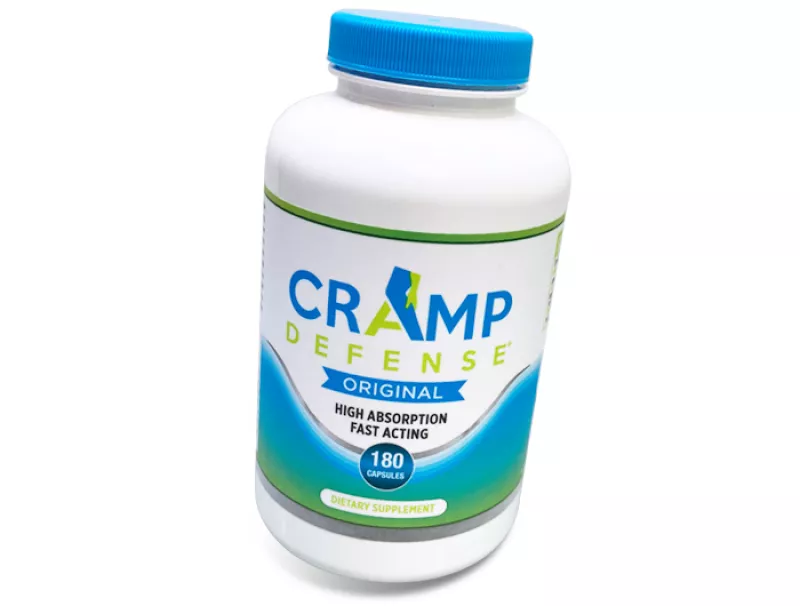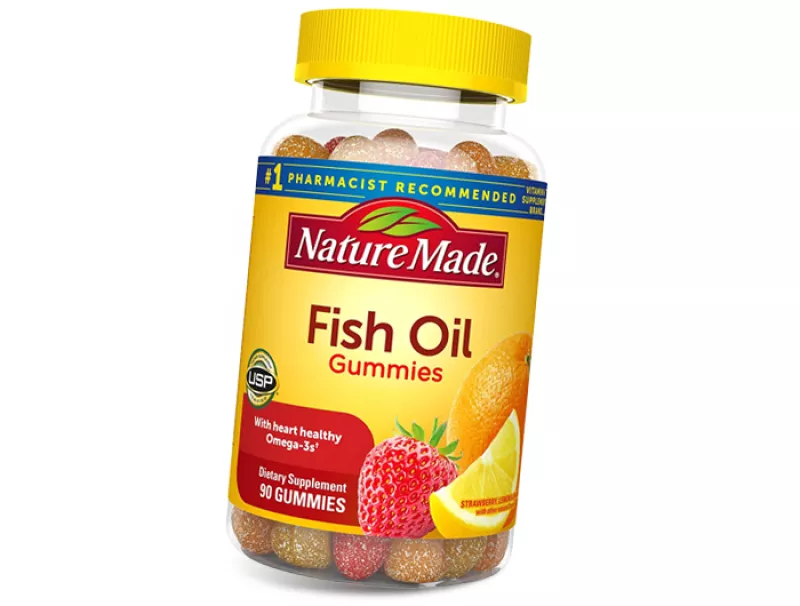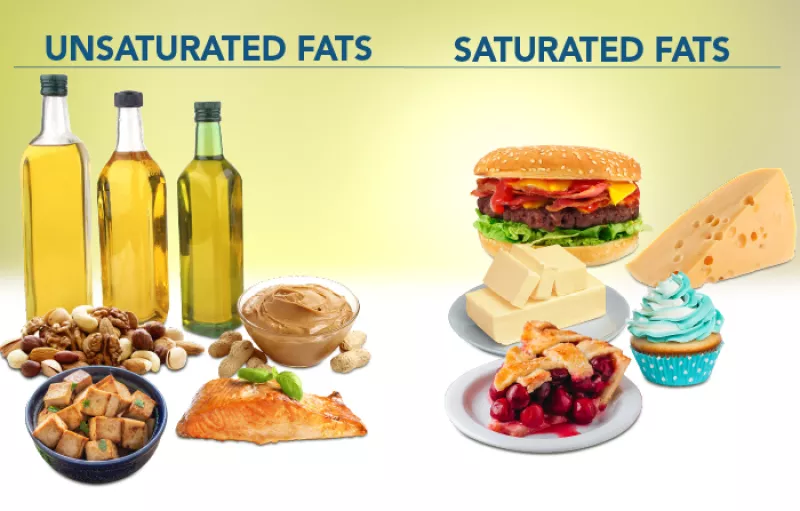Believe It or Not: The backstory on some recent buzz

Paolese/stock.adobe.com.
When it comes to staying healthy, sometimes it’s hard to know what to believe. Some advice is backed by solid evidence, and some is anything but. Here’s the scoop on some recent scuttlebutt that you may have heard.
1. Can you make up for lost sleep on weekends?
One out of three U.S. adults say they get less than the seven hours a night of sleep experts recommend. If you’re among them, that can spell trouble for your waistline...and your health.
“In most laboratory studies where people have free access to food, those who sleep less eat more and tend to gain weight,” says Christopher Depner, assistant professor of health and kinesiology at the University of Utah.
For example, among 225 volunteers, those who were randomly assigned to sleep for no more than four hours a night for five nights in a row gained two pounds, while those who slept up to 10 hours a night gained nothing.1
But extra weight isn’t the only downside to insufficient sleep.
“Laboratory controlled trials consistently show a reduction in insulin sensitivity when sleep is restricted,” notes Depner. Insulin sensitivity even fell in sleep-restricted healthy young men who weren’t allowed to overeat.2
A drop in insulin sensitivity means that your body’s insulin is less able to move blood sugar into cells. Once your insulin loses enough of its punch, blood sugar rises and you’ve got type 2 diabetes.
“Our insulin sensitivity tests can detect changes that you won’t see if you go to a doctor,” says Depner. “A rise in fasting blood sugar might tip off a clinician that you have prediabetes. But that’s going to happen much further down the road.”
Depner’s study asked a key question: “Most people try to catch up on lost sleep on the weekend, so we wanted to see if weekend recovery sleep had any benefits for metabolic health.”
His team randomly assigned 36 lean young men and women to one of three groups.3

“One group had a simulated workweek of insufficient sleep,” explains Depner. “On Monday through Friday, we restricted them to five hours of sleep per night. Then they got a simulated weekend where they could sleep as much as they wanted. And then they went back to insufficient sleep for two days.”
Another group was allowed to sleep for only five hours a night for all nine nights, while the third group was allowed to sleep for up to nine hours a night.
The results: “Weekend recovery sleep didn’t prevent weight gain or impaired insulin sensitivity,” says Depner.
“If you continually cycle back and forth between insufficient sleep during the workweek and recovery sleep on the weekend, that’s not going to protect you from the risk of weight gain and type 2 diabetes.”
“So the best advice is to try to get adequate sleep during the workweek.”
Few studies have been done on older people, notes Depner. “We don’t know what would happen if we were to look at people who were older, prediabetic, overweight, or who had other risk factors for type 2 diabetes.”
Bottom Line: For tips on how to get enough sleep, see the March 2018 issue.
2. Does high-fat dairy keep a lid on blood sugar?
“The case against low-fat milk is stronger than ever,” said TIME.com.
The evidence cited by TIME: In a study that tracked roughly 3,000 people for 15 years, those with higher levels of dairy fats in their blood had about a 45 percent lower risk of getting diabetes.4
What might explain that link?
“People eating more high fat dairy products will have enough calories so they won’t feel hungry enough to need additional calories from sugary foods,” suggested TIME.
“It’s also possible that the fats in dairy may be acting directly on cells, working on the liver and muscle to improve their ability to break down sugar from food.”
Then again, something entirely different about people with higher blood levels of dairy fat might explain their lower risk of diabetes.
“They may have a healthier diet and lifestyle,” says Alice H. Lichtenstein, director of the cardiovascular nutrition laboratory at the Jean Mayer USDA Human Nutrition Research Center on Aging at Tufts University. Or they may eat a lot of lower-fat dairy.
Two recent studies—both partly funded by the dairy industry—gave people high-fat or low-fat dairy to see if either kept blood sugar in check.

One team studied people with the metabolic syndrome, who have an increased risk of type 2 diabetes and often have higher-than-normal blood sugar levels.5
The scientists randomly assigned 72 of them to eat roughly three servings a day of low-fat dairy, three servings a day of high-fat dairy, or not much dairy (no more than three servings a week of fat-free milk and no other dairy foods).
After 12 weeks, insulin sensitivity got worse on both high-dairy diets. That is, extra dairy—full-fat or low-fat—made insulin less able to admit blood sugar into cells.
“It doesn’t appear that dairy has a beneficial impact on blood sugar levels,” says Lichtenstein.
What’s more, the high-fat-dairy group gained two pounds.
“We hear the argument that full-fat dairy increases satiety more than low-and non-fat dairy, but we don’t have data to support that,” says Lichtenstein.
In a similar study, another team randomly assigned 111 people with type 2 diabetes to one of three groups: high-fat dairy, low-fat dairy, or not much dairy.
After 24 weeks, blood sugar levels didn’t go up (not surprising, given that nearly all the participants were taking drugs to treat diabetes) or down (which must have disappointed the industry funder).6
Bottom Line: “I don’t think there’s any credible evidence at this point to recommend high-fat dairy products to control blood glucose levels or weight,” says Lichtenstein.
3. Does magnesium prevent muscle cramps?
“Muscle cramps—in the legs, feet, hands, and everywhere else—are often caused by a severe magnesium deficiency,” says Cramp Defense, a supplement that has 70 milligrams of magnesium per capsule.

“Since magnesium is constantly lost, take Cramp Defense every day to build up and maintain an optimal magnesium supply.”
Does magnesium work, especially for the cramps that often strike older people in bed? Scott Garrison, associate professor of family medicine at the University of Alberta in Canada, may be the best person to ask.
“When I was a family physician, I had a patient who was in hospital being treated for pneumonia, and she was magnesium deficient so we gave her a series of infusions of magnesium,” says Garrison.
“And when she came back for follow-up, she mentioned that these horrible cramps that she’d had for years were gone.”
That patient led Garrison to switch from family doctor to researcher.
“I knew that magnesium was being widely marketed for muscle cramps and that magnesium is very poorly orally absorbed,” he explains. “Much of it stays in the bowel and pulls water with it. That’s why Milk of Magnesia is a laxative.”
So Garrison randomly assigned 46 people with nighttime muscle cramps to get intravenous infusions of magnesium or a placebo.7 “We knew that was the most effective way to give magnesium,” he says.
It didn’t matter.
“Even in people who were deficient, magnesium didn’t make a difference.”
Since then, Garrison has twice examined all of the trials on magnesium and cramps. The studies came up empty.8
Garrison’s conclusion: “Magnesium doesn’t reduce the frequency or severity of nocturnal leg cramps in older adults.”
“We couldn’t draw any conclusions about cramps in pregnant women, in people with certain neurological disorders, or when people cramp during exercise, usually at the extremes of exertion,” he adds.
What causes nighttime cramps?
“We don’t know,” says Garrison.
“But we do know that it’s a nerve disorder, not a muscle disorder.”
“The nerve that sits in the base of your spine and projects all the way down to the muscle it innervates, that nerve is responsible for the cramping,” he explains.
What might—and what probably won’t—help?
- Switching meds. Leg cramps can be a side effect of many prescription drugs (though cramps also occur in plenty of people who take none).
“In my own research, two commonly used medications—potassium-sparing diuretics like spironolactone and inhaled beta-agonists like salmeterol—appear to promote cramps,” says Garrison.9 “People use beta-agonist inhalers to open their airways when they have COPD, emphysema, or asthma.”
Garrison’s study didn’t prove that the drugs cause cramps, he cautions. Still, it’s worth talking to your doctor about the pros and cons of trying another drug. (Don’t just stop taking your meds.)
Switching may be easy.
“Inhalers like Spiriva or Atrovent work in a different way and have no link to cramping,” notes Garrison. “And there are lots of alternative blood pressure pills.”
- Stretching before bed. “Two randomized trials of prophylactic stretching before you go to bed had different results,” says Garrison.
“The study that suggests a benefit compared stretching to no treatment.10 That makes it less believable than the second study, which compared stretching to movements that were not stretches. And that study showed no benefit.”11

- Stretching a cramped muscle. “If you stretch the muscle while it’s cramping, it may help stop the cramp,” says Garrison. “It’s done around the world by sports trainers when people have a cramp, and studies have found that it’s harder to ignite a cramp when the muscle is at its most-stretched position.”
Got a calf muscle cramp? “Stand up and try to lean forward so that the muscle is lengthening,” says Garrison.
- Quinine. Taking the antimalaria drug may reduce cramps by about 30 percent, according to some estimates, but that’s based on low-quality evidence.12
Worse yet, “quinine can attack your platelets, so you’re at risk for bleeding,” cautions Garrison. “It can also cause heart rhythm disturbances.”
That’s why the Food and Drug Administration warns doctors not to prescribe quinine for cramps.13
Don’t worry about getting too much quinine from tonic water. “You’d need at least nine cans to get the quinine in one tablet,” says Garrison.
Bottom Line: Don’t rely on magnesium, quinine, or stretching before bed to prevent cramps. Switching meds may help. Stretching can ease a cramp once it starts.
4. Does fish oil protect the heart?
"With heart healthy Omega-3s,” says the label of Nature Made Fish Oil Gummies.
Fish oil is big business.

Do supplements or drugs that supply EPA, DHA, or both omega-3 fats cut the risk of a heart attack, stroke, or other cardiovascular event? In November, scientists reported surprising new findings.
In the STRENGTH trial, researchers randomly assigned roughly 13,000 people to take 4,000 milligrams a day of either fish oil (which contains EPA and DHA) or corn oil (which contains neither) for about three years.14
“The trial was focused on patients who had high triglycerides, low HDL, and either established cardiovascular disease or a high risk for development of cardiovascular disease,” noted Michael Lincoff, professor of medicine at the Cleveland Clinic Lerner College of Medicine, at the American Heart Association’s Scientific Sessions 2020. All of the participants were also taking statins.
The trial used Epanova, a drug that contains EPA and DHA made by AstraZeneca, which funded the research.
“We specifically used a corn oil placebo because it’s a neutral placebo, unlike mineral oil, which does have some adverse effects on cardiovascular markers,” explained Lincoff.
Mineral oil was the placebo in the 2018 REDUCE-IT trial, which reported a 25 percent lower risk of cardiovascular events in high-risk people who were given a highly purified version of EPA (a drug called Vascepa) instead of mineral oil.15 (The study was funded by Amarin Pharma, which makes Vascepa.)
Some scientists worried that the mineral oil might have raised risks in REDUCE-IT’s control group, which would have made Vascepa appear effective.
But an expert panel advising the FDA concluded that mineral oil could have explained only a small fraction of the difference between groups.16
Unlike REDUCE-IT, the STRENGTH trial—with its neutral placebo—came up empty.
Epanova “did not reduce major adverse cardiac events,” said Lincoff.
And the drug had a downside.
“The risk of atrial fibrillation—a potentially dangerous arrhythmia—was increased by as much as 70 percent,” Lincoff noted.
That wasn’t common, though. Epanova caused the irregular heartbeat—which can increase the risk of stroke—in about 1 of every 100 users.
The REDUCE-IT trial also reported more atrial fibrillation in EPA takers than in placebo takers.
What about people who aren’t at high risk? As it happens, scientists released the results of the VITAL Rhythm Study at the same Heart Association meeting.17
VITAL Rhythm tested whether daily EPA (460 mg) plus DHA (380 mg) could prevent atrial fibrillation in roughly 25,000 people at ordinary risk.
While those taking fish oil had no lower risk, “the good news is that there wasn’t an increase in risk,” reported Christine Albert, who chairs the cardiology department at Cedars-Sinai in Los Angeles.
(The full study hadn’t been published at the time.)
Bottom Line: Aim for one to two servings of seafood a week, as the American Heart Association advises.18 The jury is still out on fish oil supplements.
5. Does saturated fat boost liver fat?
An estimated one out of three U.S. adults—and one out of 10 children—have non-alcoholic fatty liver disease, or NAFLD.19
“It’s one of the most common liver diseases worldwide,” notes Fredrik Rosqvist of Uppsala University in Sweden.
The chief cause: excess weight around the waist.
“NAFLD is a spectrum of diseases,” explains Rosqvist. In the beginning, the liver simply accumulates extra fat. “That can progress to a fatty liver with inflammation. And that may progress to cirrhosis or liver cancer.”
Only about 20 percent of people with NAFLD have that severe, inflammatory version. But even a fatty liver without inflammation can cause trouble.
“NAFLD is strongly associated with both type 2 diabetes and cardiovascular disease,” says Rosqvist.
Although excess weight is the key driver for fatty liver, replacing saturated fats with polyunsaturated fats may help limit liver fat.

Source: Adapted from “The Facts on Fat,” American Heart Association.
In the HEPFAT trial, researchers randomly assigned 61 people with abdominal obesity to eat a diet high in either saturated fats (from butter and scones made with butter) or polyunsaturated fats (from sunflower seeds, sunflower oil and spreads, and scones made with sunflower oil) for 10 weeks.20
“Saturated fat increased liver fat content, whereas polyunsaturated fat actually decreased it,” says Rosqvist.
In two other trials, researchers had people with normal or excess weight consume an extra 750 calories a day by eating muffins made with either palm oil (a saturated fat) or sunflower oil (a polyunsaturated fat).21,22 In a third trial, the saturated fat came from coconut oil, butter, and blue cheese, while the unsaturated fat came largely from olive oil, pesto, and pecans.23
After three to eight weeks, all the groups had gained three to five pounds.
“But for the same weight gain, saturated fat increased liver fat, whereas polyunsaturated fat led to little or no liver fat accumulation,” says Rosqvist.
“And it improved the blood lipid profile.” That is, the polyunsaturated fat lowered LDL (“bad”) cholesterol, while the saturated fat raised it.
“In our most recent study, the people eating more saturated fats only gained about an ounce of liver fat, so few crossed the threshold for having a fatty liver notes Rosqvist.
How many would have crossed the threshold if the study had lasted several years rather than weeks? Researchers haven’t looked.
Nevertheless, says Rosqvist, “it’s important to exchange some of your saturated fat intake with unsaturated fats.”
That should lower your LDL cholesterol. And if it also helps prevent fatty liver, think of it as a bonus.
Bottom Line: Replace butter, cheese, red meats, and palm or coconut oil with other oils, nuts, seeds, and fish.
1Sleep 36: 981, 2013.
2Diabetes 59: 2126, 2010.
3Curr. Biol. 29: 957, 2019.
4Circulation 133: 1645, 2016.
5Am. J. Clin. Nutr. 2020. doi:10.1093/ajcn/nqaa301.
6Am. J. Clin. Nutr. 112: 293, 2020.
7J. Gerontol. A Biol. Sci. Med. Sci. 66: 661, 2011.
8Cochrane Database Syst. Rev. 9: CD009402, 2020.
9Arch. Intern. Med. 172: 120, 2012.
10J. Physiother. 58: 17, 2012.
11Br. J. Gen. Pract. 55: 186, 2005.
12Cochrane Database Syst. Rev. 4: CD005044, 2015.
13 fda.gov/media/84506/download.
14JAMA 2020. doi:10.1001/jama.2020.22258.
15N. Engl. J. Med. 380: 11, 2019.
16JAMA 2020. doi:10.1001/jama.2020.22898.
17 professional.heart.org/-/media/phd-files/meetings/scientific-sessions/2020/sci-news/vital-rhythm-summary-slide.
18Circulation 2018. doi:10.1161/ CIR.0000000000000574.
19J. Intern. Med. 287: 711, 2020.
20Am. J. Clin. Nutr. 95: 1003, 2012.
21Diabetes 63: 2356, 2014.
22J. Clin. Endocrinol. Metab. 104: 6207, 2019.
23Diabetes Care 41: 1732, 2018.
The Latest by Bonnie
Prediabetes: What may—and may not—help reverse it?
Weight and Health

A snapshot of the latest research on diet, exercise, and more
Preventing Disease

The good fats
Healthy Eating

Play the ingredient game!
Food Labeling

Pop Quiz!
Preventing Disease


